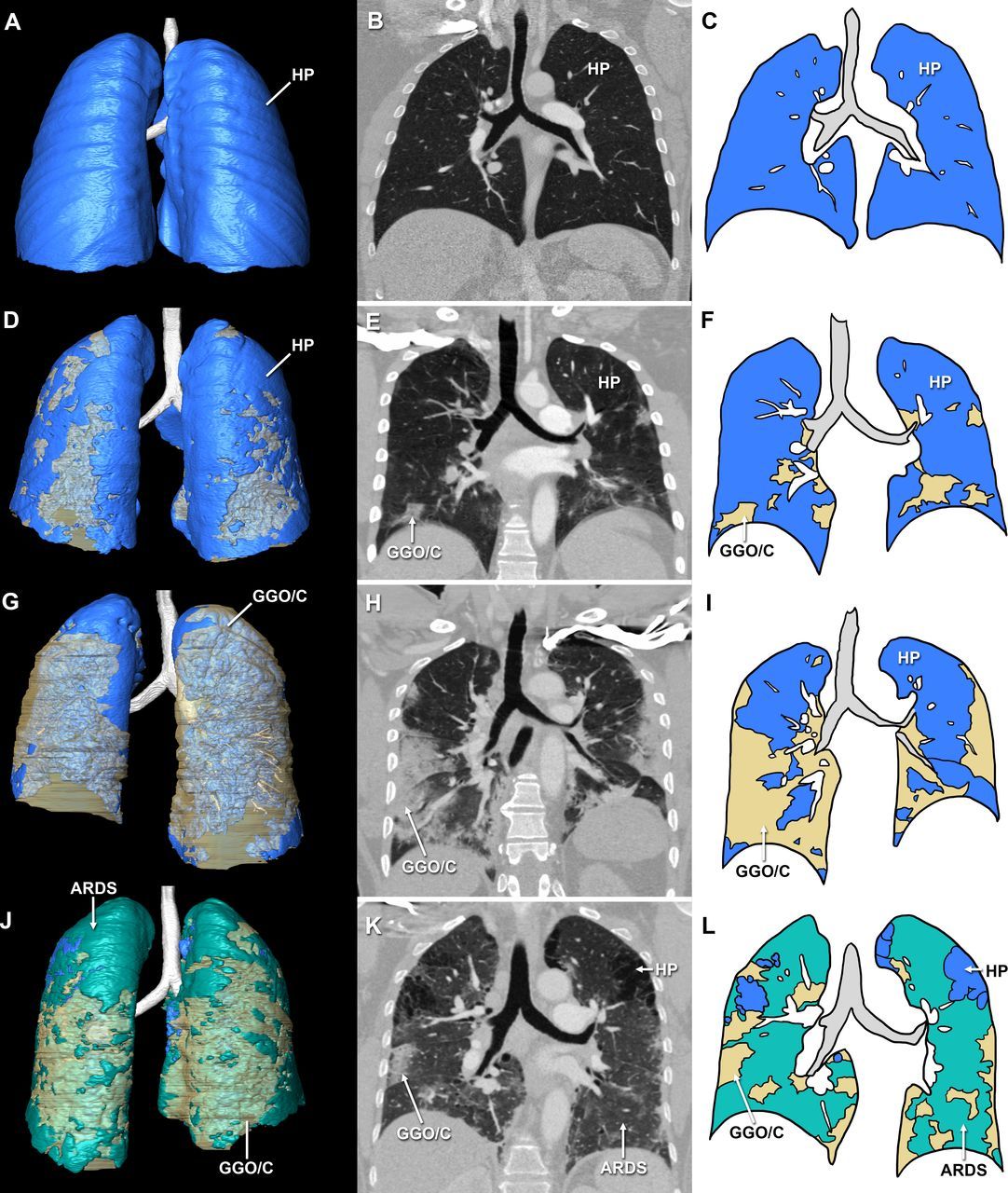Evolutionary Science Methods Help Create 3D CT Models of COVID-19 Damage
Radiologists have teamed up with evolutionary anatomy scientists, using methods that investigate bird and reptile lungs, to better visualize viral infection in people.
There have been no confirmed cases of COVID-19 infection in reptiles and birds, but a multi-disciplinary team from Louisiana State University Health Sciences Center is using some of the same strategies employed to investigate the lungs of these creatures to confirm diagnosis of the virus in people.
The resulting digital 3D models not only offer greater clarity about how the infection distributes throughout the lungs, but they can also be used as a powerful communication tool about the virus with the general public, the team said.
In an article published in BMJ Case Reports, co-authors Emma R. Schachner, Ph.D., associate professor of cell biology and anatomy, and Bradley Spieler, M.D., vice chairman of radiology research, discussed the 3D models they created, using CT scans from patients who were hospitalized with worsening COVID-19 symptoms.
Three-dimensional (3D) segmented surface models of normal, COVID-19 and suspected COVID-19 lungs in posterior view (left) and coronal views with accompanying simplified diagrammatic illustrations of the coronal CTs demonstrating the infection sites. Healthy lungs of a 50-year-old man as a segmented 3D model in posterior view (A), a coronal contrast enhanced CT slice (B) and a diagrammatic illustration of B (C). COVID-19-positive 46-year-old man (mild respiratory symptoms) as a segmented 3D model in posterior view (D), a coronal contrast enhanced CT slice (E) and a diagrammatic illustration of E (F). Lungs of a COVID-19-negative 56-year-old man with clinical suspicion for COVID-19 as a segmented 3D model in posterior view (G), a coronal contrast-enhanced CT slice (H) and a diagrammatic illustration of H (I). Lungs of a COVID-19-positive 55-year-old woman with ARDS as a segmented 3D model in posterior view (J), a coronal contrast enhanced CT slice (K) and a diagrammatic illustration of K (L). Models demonstrate the relationship, distribution and full extent of the disease in 3D versus the single CT slice which only provides information on the localised position of the infection. ARDS, acute respiratory distress syndrome; C, consolidated infection; GGO, ground-glass opacities; HP, healthy parenchyma. Colour key: blue, healthy tissue; yellow, consolidation and ground glass opacities; green, ARDS. Images not to (relative) scale. Courtesy: LSU Health New Orleans

“The use of 3D digital segmented models from CT data provides the opportunity to evaluate the extent and distribution of the disease in one encapsulated view for clinicians, particularly in the case where RT-PCR for SARS-CoV-2 is negative but there is strong clinical suspicion for COVID-19,” they wrote. “Three-dimensional segmented digital models provide a dramatically clearer method for visually evaluating the impact of COVID-19 on the lungs than straight radiographs, CT data or [RT-PCR] alone.”
The features of CT scans can range in form and structure, they said, appearing to correlate with the progression of the disease. Consequently, this allows for 3D data segmentation in which lung tissue is volumetrically quantified or air flow patterns are modeled.
Schachner and Spieler used established methods from evolutionary anatomy research and scientific visualization to segment the CT scans into 3D digital surface models. One-millimeter slices were used. They created three models that all show varying degrees of COVID-19-related infection, particularly in the back and bottom sections of the lungs.
Because there are no good models that show how COVID-19 acts on the lungs, this model focused on visualizing that lung damage.
“Previously published 3D models of lungs with COVID-19 have been created using automated volume rendering techniques,” Schachner said. “Our method is more challenging and time consuming, but results in a highly accurate and detailed anatomical model where the layers can be pulled apart, volumes quantified, and it can be 3D printed.”
Overall, they pointed out, the holisitic view rendered by this model makes it easier for the wider medical audience to grasp the extent and severity of this pulmonary infection.
“Unlike simple volume rendered images, these models can be 3D printed, and thus have a much broader functional application that allows for the collaboration between basic and clinical scientists, which is particularly important given the critical nature of COVID-19,” they said.
GE HealthCare Debuts AI-Powered Cardiac CT Device at ACC Conference
April 1st 2025Featuring enhanced low-dose image quality with motion-free images, the Revolution Vibe CT system reportedly facilitates improved diagnostic clarity for patients with conditions ranging from in-stent restenosis to atrial fibrillation.
Can Photon-Counting CT be an Alternative to MRI for Assessing Liver Fat Fraction?
March 21st 2025Photon-counting CT fat fraction evaluation offered a maximum sensitivity of 81 percent for detecting steatosis and had a 91 percent ICC agreement with MRI proton density fat fraction assessment, according to new prospective research.